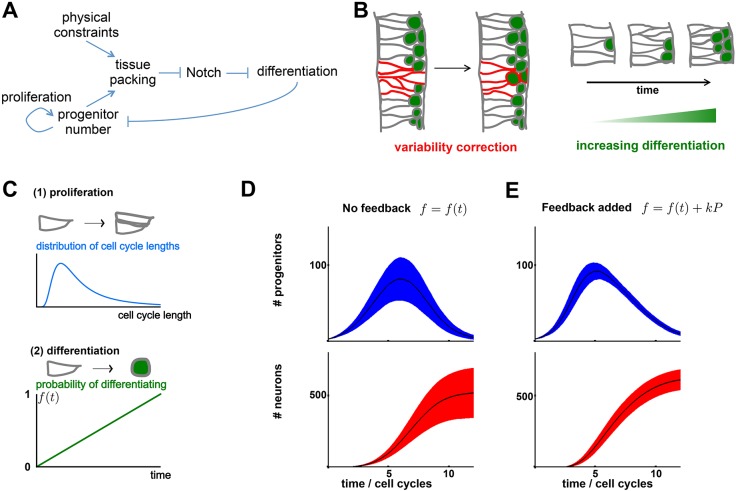Fig. 6.
Apical crowding as a feedback mechanism to control progenitor number. (A) Proposed regulation of differentiation by cell shape to form a negative-feedback loop. This feedback could perform several functions, schematized in B. (B) Negative feedback naturally reduces variability in progenitor number. Left: a region of high progenitor density (red) corrects itself by differentiating. Right: if cells divide within a confined space, negative feedback predicts an increase in differentiation over time. (C) A phenomenological mathematical model of neural tube development with two main ingredients. Top: progenitors proliferate with a given cell cycle distribution; here, we assume a generalized extreme value distribution. Bottom: progenitors differentiate shortly after dividing, with probability f(t). (D) Progenitor and neuron numbers are variable without feedback. The black line is the mean trajectory; red and blue regions indicate the s.d. for 3000 independent simulations. (E) When we add feedback [by allowing f(t)=f0(t)+kP], the s.d. in neuron and progenitor number is significantly reduced.

